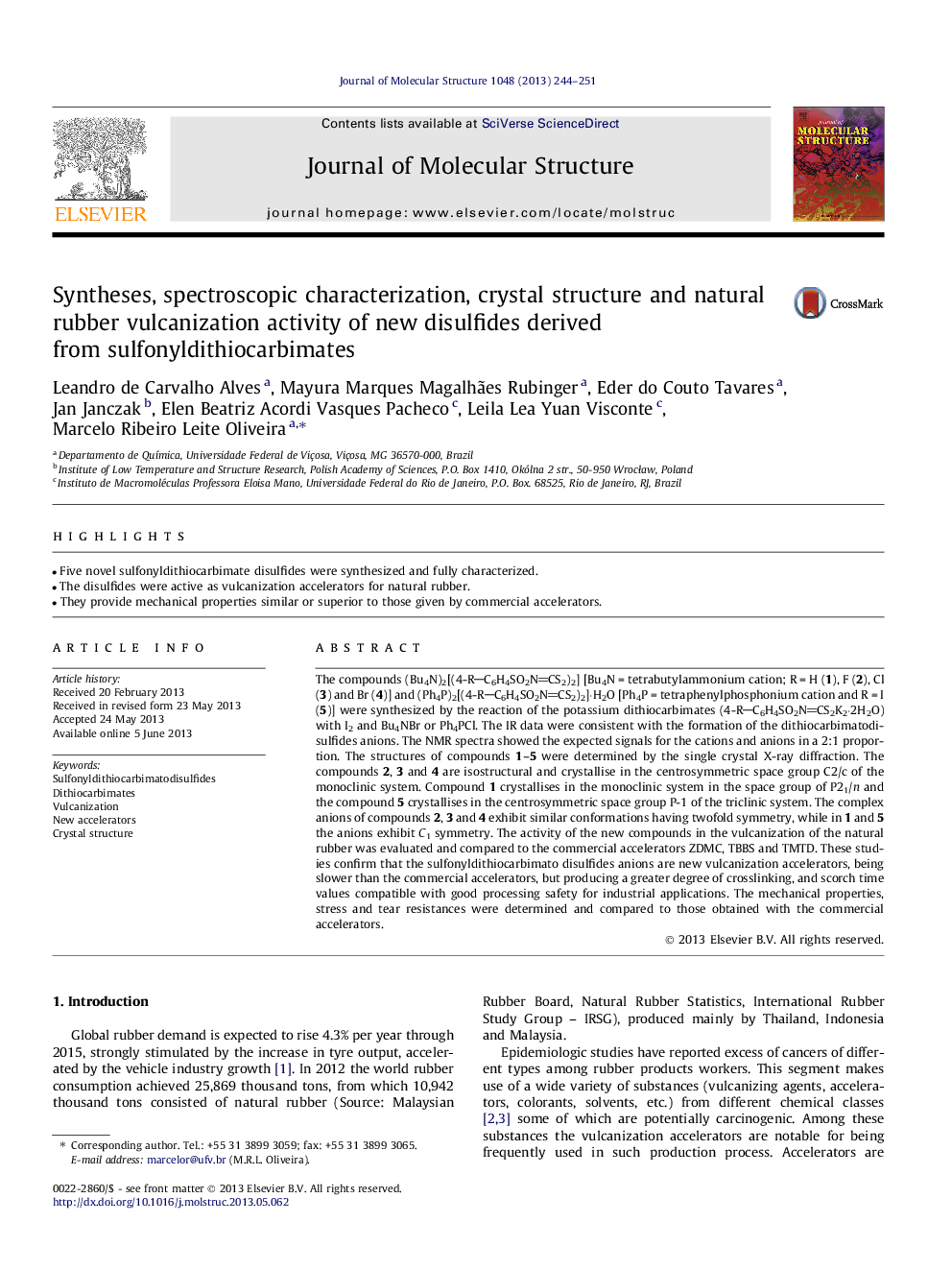| Article ID | Journal | Published Year | Pages | File Type |
|---|---|---|---|---|
| 7810659 | Journal of Molecular Structure | 2013 | 8 Pages |
Abstract
The compounds (Bu4N)2[(4-RC6H4SO2NCS2)2] [Bu4NÂ =Â tetrabutylammonium cation; RÂ =Â H (1), F (2), Cl (3) and Br (4)] and (Ph4P)2[(4-RC6H4SO2NCS2)2]â
H2O [Ph4PÂ =Â tetraphenylphosphonium cation and RÂ =Â I (5)] were synthesized by the reaction of the potassium dithiocarbimates (4-RC6H4SO2NCS2K2â
2H2O) with I2 and Bu4NBr or Ph4PCl. The IR data were consistent with the formation of the dithiocarbimatodisulfides anions. The NMR spectra showed the expected signals for the cations and anions in a 2:1 proportion. The structures of compounds 1-5 were determined by the single crystal X-ray diffraction. The compounds 2, 3 and 4 are isostructural and crystallise in the centrosymmetric space group C2/c of the monoclinic system. Compound 1 crystallises in the monoclinic system in the space group of P21/n and the compound 5 crystallises in the centrosymmetric space group P-1 of the triclinic system. The complex anions of compounds 2, 3 and 4 exhibit similar conformations having twofold symmetry, while in 1 and 5 the anions exhibit C1 symmetry. The activity of the new compounds in the vulcanization of the natural rubber was evaluated and compared to the commercial accelerators ZDMC, TBBS and TMTD. These studies confirm that the sulfonyldithiocarbimato disulfides anions are new vulcanization accelerators, being slower than the commercial accelerators, but producing a greater degree of crosslinking, and scorch time values compatible with good processing safety for industrial applications. The mechanical properties, stress and tear resistances were determined and compared to those obtained with the commercial accelerators.
Related Topics
Physical Sciences and Engineering
Chemistry
Organic Chemistry
Authors
Leandro de Carvalho Alves, Mayura Marques Magalhães Rubinger, Eder do Couto Tavares, Jan Janczak, Elen Beatriz Acordi Vasques Pacheco, Leila Lea Yuan Visconte, Marcelo Ribeiro Leite Oliveira,
